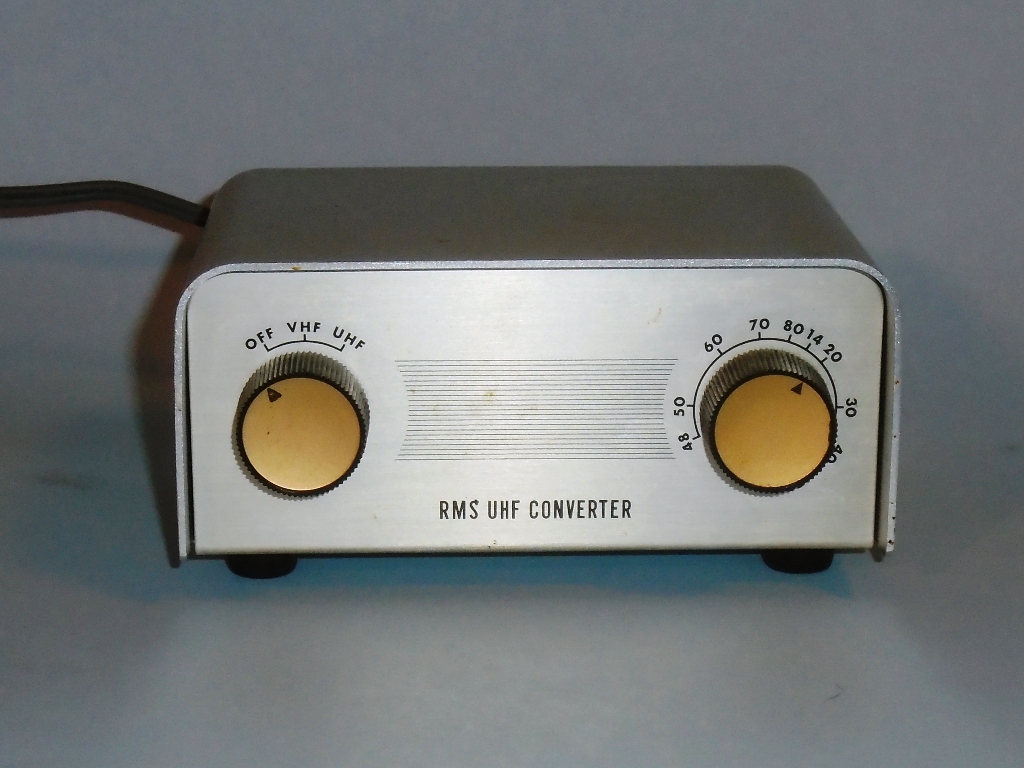RMS CR2-T


RMS is "Radio Merchandise Sales," a New York City company that was in the TV signal booster and accessory business from the late 1940s and added UHF converters later. This model is probably from 1960s or '70s, and uses transistors instead of vacuum tubes. Like other UHF converters I've found from RMS, it is a Japanese import.
The CR2-T's simple bent-aluminum cabinet is neat and workmanlike but little more. Inside, a single-sided phenolic PC board contains all the circuitry except the function switch. A transistor oscillator and a mixer diode feed into a transistor output amplifier. The oscillator is tuned with a piston-type variable capacitor of simple but sturdy construction, and a "hairpin" loop inductor. The AC power is converted to low-voltage DC without a transformer.
Notice that the tuning dial on this converter starts AND ends with channel 48, the middle of the old UHF band! The bottom (14) and top (83) channels are side-by-side, halfway through the dial's rotation. I was puzzled by this arrangement, especially considering that the PC board's paper-phenolic material has poor UHF characteristics. This means that the oscillator probably could not reliably operate at the high end of the UHF frequency range, where it would need to generate up to a 950MHz signal. Evidently the designers found that it could manage 750MHz, good enough for channel 48. They then used an old trick: by setting the the oscillator's lowest frequency (dial turned fully CCW) to 375MHz and using its 2nd harmonic, they could convert channels 48-83 at the low end of the oscillator's range, and then switch to its fundamental signal for the remaining channels. It is fraught with performance trade-offs, not least the wierd tuning range, but it was a cheap way to accomplish full channel coverage when most areas had fewer than 3 UHF TV stations.
Updated January 20, 2016